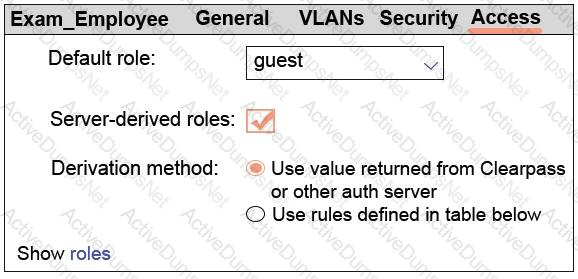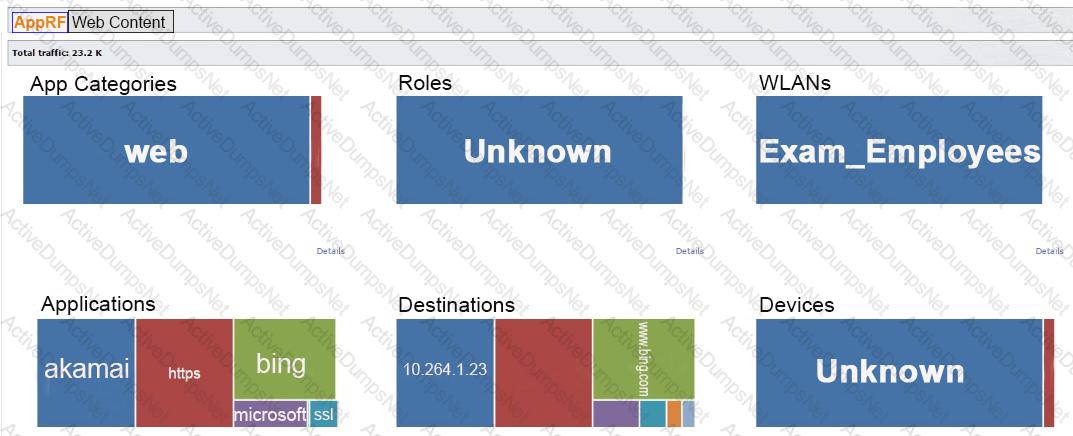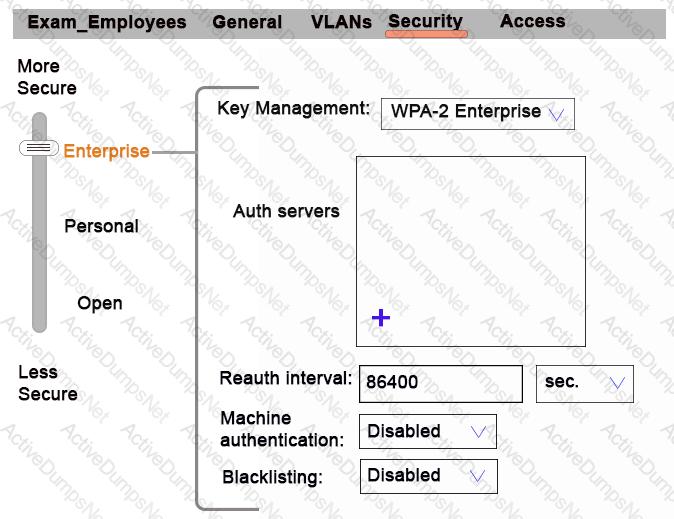HP HPE6-A70 Aruba Certified Mobility Associate Exam Exam Practice Test
Aruba Certified Mobility Associate Exam Questions and Answers
An Aruba Mobility Master (MM)-based solution has two Virtual MM nodes, a primary and a backup node. The solution must support 30 Virtual Mobility Controllers (VMCs) that will support a total of 960 APs.
Which VMC licenses meet the needs and DO NOT unnecessarily exceed them?
Refer to the exhibit.

A network administrator sets up the Exam_Employees WLAN on an Aruba solution with a default role of guest, as shown in the exhibit. To which users does the guest role apply?
An Aruba Remote AP (RAP) operates in split-tunnel mode. How does the AP forward traffic?
A WLAN in an Aruba Mobility Master (MM)-based solution enforces Enterprise-WPA2 security and uses the tunnel forwarding mode. The company has an external RADIUS server.
Which device exchanges RADIUS packets with the RADIUS server?
Refer to the exhibit.

The exhibit shows output from a Mobility Master (MM) dashboard. What is a valid reason for the administrator to click the akamai square under applications?
How does WPA2 protect wireless user traffic in the air?
Which Mobility Master (MM) dashboard should an administrator access to view a list of rogue and interfering APs?
What is the minimum space between channels in the 2.4GHz range to prevent overlap?
Which task can an Aruba Air Monitor (AM) perform?
What is an example of a Layer2 wireless threat that a wireless intrusion detection system (WIDS) should detect?
A network administrator wants to assign an authentication server group to the WPA2-Enterprise WLAN. Which profile should the administrator modify?
A network administrator needs to configure firewall rules for three roles:
- Finance
- Sales
- Employee
Several rules apply to both the Employee and Sales roles, but not to the Finance role. What is the simplest way to configure these rules?
What is one difference between captive portal authentication and 802.1X authentication?
A network administrator monitors an Aruba Mobility Controller with Aruba AirWave and sees the configuration status is Error. What should the administrator conclude?
Which pre-defined role allows DHCP, DNS, and internal captive portal redirection for a guest WLAN?
Refer to the exhibit.

Network administrators need to set up a WLAN that uses WPA2 encryption and authenticates users with a preshared key (PSK) that is the same for all users. Administrators do not see where they should specify the option for the preshared key.
What should the administrators do?
What is the difference between WPA and WPA2 encryption?
What is a reason for a company to choose to deploy an Aruba 7024 Mobility Controller (MC) rather than an Aruba 7010 MC?
Which feature is unique to 802.11ac Wave 2 access points?
